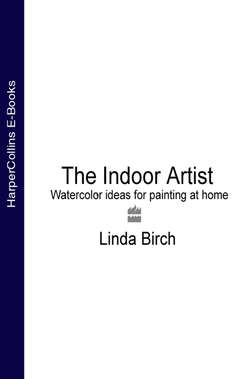Читать книгу The Indoor Artist - Linda Birch - Страница 11
LOOKING AT SHAPE AND FORM
ОглавлениеMiddle East Street
20 × 30 cm (8 × 12 in)
The strong sunlight of this Middle Eastern scene causes dark shadows which help to link the composition together.
The three-dimensional form that makes a painting convincing is created by light and shadow, depicted as tone and colour. Simplifying objects to geometrical shapes and studying the way the light falls upon them will help you to render their structure and volume, while varying the source and strength of lighting in a painting will create very different atmospheres and moods.
Shadows are a vital part of picture-making, and they don’t have to be grey. Awareness of the colour in shadows is important, and easy once you understand some simple colour theory. Equally important is considering the shapes between the objects, which play just as large a role in the composition as the objects themselves.
UNDERSTANDING FORM
By simplifying objects to basic geometric shapes you can more easily observe the effects of light and shadow that describe the volume of their form. Almost anything can be reduced to a sphere, a cone, a cylinder or a cube. Once you look for these elemental shapes, you will be able to tackle even the most complicated forms with confidence.
Using shapes together
Once you have accustomed yourself to seeing objects as geometric shapes, you can easily add them together. Try reducing a tree to a simple sphere sitting on a tube, for example; this is the basic structure and volume of most trees, especially when they are in full leaf. Simplifying the form will help you to realize the volume a tree possesses. Within its outer spherical shape are numbers of smaller round shapes, which become the foliage masses. Shapes will obviously vary with the type of tree, but if you are aware of this basic underlying form it will help you paint trees and foliage more successfully.
A sphere: a rose
A cone: a seated dog
A cube: a house
A cylinder: a bottle
These elemental forms will help you construct more complicated drawings.
